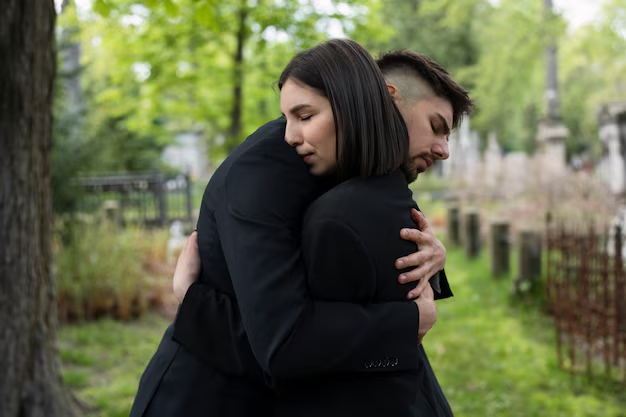Can’t Help Falling In Love: The Best Love Song Ever?
From Elvis’s velvety voice to countless wedding aisles, “Can’t Help Falling in Love” is more than just a song; it’s an emotion captured in melody—a universal declaration of love‘s inevitability. What is it about this particular love song that makes it so timeless and universally cherished across generations?
Table of Contents
This comprehensive guide explores everything you need to know about this iconic ballad—from its surprising French origins to its cultural impact, musical structure, and the countless artists who have reimagined it over the decades. Whether you’re planning your wedding, learning to play this classic, or simply fascinated by its enduring appeal, join us as we dive deep into why we all can’t help falling in love with this legendary song.
History & Origins: From French Romance to Elvis Icon
The Roots in “Plaisir d’amour”
Few people realize that this beloved classic wasn’t entirely original. “Can’t Help Falling in Love” traces its melodic roots back to a much older composition—the 1784 French classical piece “Plaisir d’amour” (The Pleasure of Love) composed by Jean-Paul-Égide Martini. This romantic French chanson was a popular salon piece in its day, known for its beautiful melody and themes of love’s pleasures and sorrows. The original French lyrics told of love’s fleeting joys and enduring pain—quite different from the more optimistic adaptation we know today.
“Can’t Help Falling in Love” is Born (1961)
The transformation from classical French romance to American pop standard came in 1961 when songwriters Hugo Peretti, Luigi Creatore, and George David Weiss adapted Martini’s melody for Elvis Presley’s film “Blue Hawaii.” The songwriters preserved the core melody but shifted the lyrics to English, simplified the arrangement, and created a more accessible pop structure that suited Elvis’s smooth baritone voice.
This adaptation represented a beautiful bridge between classical European music tradition and mid-century American pop—creating something both familiar and fresh. The songwriters maintained the gentle, lilting quality of the original while crafting lyrics that spoke to the sense of destiny and inevitability in falling in love.
“Blue Hawaii” and the Song’s Launch
In “Blue Hawaii,” Elvis performs “Can’t Help Falling in Love” during one of the film’s most tender moments. The scene features Elvis singing to his grandmother, giving the song an initial context of familial love rather than purely romantic love—an interesting contrast to its later wedding-focused popularity.
The film’s tropical paradise setting provided the perfect backdrop for this gentle ballad, and its commercial success helped propel the song into public consciousness. Released as a single in 1961, the song quickly climbed the charts, reaching #2 on the Billboard Hot 100 and becoming one of Elvis’s signature recordings.
Elvis’s Enduring Connection to the Song
Throughout his later career, Elvis maintained a special relationship with “Can’t Help Falling in Love,” often using it as the finale in his live performances. Most notably, it became the closing number of his famous concert tours and Las Vegas residencies during the 1970s, including his “Aloha from Hawaii” satellite broadcast viewed by over a billion people worldwide.
This consistent placement at the end of his shows cemented the song’s significance in Elvis’s repertoire and helped establish it as one of the most recognizable love songs in popular music history. Even today, it’s nearly impossible to think of the song without envisioning Elvis in his white jumpsuit, delivering those iconic lines with tender conviction.
Lyrical Analysis & Meaning: Exploring the Heart of the Song

Theme of Inevitable Love
At its core, “Can’t Help Falling in Love” explores the theme of love as an irresistible force. The opening lines set this up perfectly: “Wise men say only fools rush in / But I can’t help falling in love with you.” This immediate contrast acknowledges conventional wisdom (take your time in love) while simultaneously dismissing it in favor of emotional truth (some feelings are beyond our control).
The lyrics create a beautiful tension between rational thought and emotional surrender. The narrator knows that rushing into love might be foolish, yet embraces this vulnerability anyway—suggesting that true love transcends logical decision-making.
Vulnerability and Openness
Throughout the song, there’s an emotional honesty that resonates with listeners. Lines like “Take my hand, take my whole life too” express complete surrender to love and willingness to be vulnerable. This sentiment of giving oneself entirely to another person captures the essence of deep romantic commitment.
The simplicity of declarations like “For I can’t help falling in love with you” conveys a sense of surrender that most people can relate to when deeply in love. There’s no complex rationalization or elaborate poetry—just the straightforward admission of love’s power over the heart.
Simplicity and Universality
Part of the song’s enduring appeal lies in its lyrical simplicity. With just a few verses and a repeated refrain, “Can’t Help Falling in Love” avoids complexity in favor of emotional directness. The lyrics use everyday language rather than flowery metaphors, making the sentiment accessible to everyone.
This straightforward approach contributes significantly to the song’s cross-cultural appeal. The feelings described are universal human experiences, unbounded by time or culture. Whether in 1961 or 2025, the experience of falling helplessly in love remains fundamentally the same—which explains why the song continues to resonate across generations.
Musical Analysis: The Melody, Harmony, and Magic

The Melody’s Gentle Flow
The melody of “Can’t Help Falling in Love” is characterized by its smooth, flowing quality and memorable contour. It moves primarily in stepwise motion, creating a gentle rise and fall that mirrors the natural cadence of speech and the emotional waves of falling in love.
What makes this melody particularly effective is its perfect marriage with the lyrics. As the words speak of inevitability and surrender, the melody itself seems to cascade downward, especially on the title phrase “can’t help falling in love”—musically illustrating the sensation of falling.
Chord Progression and Harmony
The song’s harmonic structure contributes significantly to its romantic quality. Built primarily around a descending progression in the key of D major (in Elvis’s original version), the chords create a sense of gentle movement and natural flow. This descending pattern—similar to what musicians often call a “falling bass line”—subtly reinforces the lyrical theme of “falling” in love.
The harmony uses primarily major chords, creating a warm, positive emotional tone that supports the song’s optimistic view of love. When minor chords do appear, they create brief moments of tension that resolve beautifully back to major, mirroring the emotional journey of surrendering to love despite any hesitations.
Tempo and Rhythm
The slow, gentle tempo of “Can’t Help Falling in Love” is crucial to its emotional impact. Clocking in at approximately 80 beats per minute, it moves at the pace of a slow heartbeat, creating an intimate, meditative quality. This unhurried tempo gives listeners space to absorb the emotional content of each line and allows performers to infuse each phrase with nuance and feeling.
The triple meter (3/4 time signature) creates a gentle waltz-like quality, evoking traditional romantic dancing and adding to the song’s timeless feel. This rhythmic structure naturally creates a swaying sensation that reinforces the dreamy, romantic mood.
Musical Structure
The song follows a straightforward verse-chorus structure, but with an interesting twist—the verses and chorus use the same melody, creating a seamless, flowing quality. This structural choice reinforces the song’s theme of inevitability; just as the narrator can’t help falling in love, the melody can’t help returning to its familiar pattern.
This repetition with slight variation creates a hypnotic quality that draws listeners in and makes the song incredibly memorable after just one hearing—a key factor in its lasting appeal and “earworm” quality.
Cultural Impact and Weddings: A Song for Generations

Enduring Popularity Across Generations
Few songs have maintained relevance across six decades like “Can’t Help Falling in Love.” From Baby Boomers who first heard Elvis’s original to Gen Z discovering it through TikTok trends or film soundtracks, the song has consistently found new audiences.
This cross-generational appeal stems from its timeless subject matter, melodic accessibility, and emotional authenticity. Love remains a universal experience, and the song captures its essence in a way that transcends changing musical trends and cultural shifts.
The Ultimate Wedding Song
“Can’t Help Falling in Love” has become one of the most requested wedding songs of all time, particularly for first dances and processionals. Wedding planners and DJs consistently rank it among their top requests year after year.
“This song perfectly encapsulates what couples want to express on their wedding day,” explains Jennifer Miller, a wedding planner with 15 years of experience. “The lyrics about taking someone’s hand and whole life too—it’s essentially wedding vows set to music.”
The song’s gentle pace makes it ideal for the traditional wedding slow dance, while its message of inevitable love aligns perfectly with the sentiment of marriage as destiny or meant-to-be. Additionally, its recognition across generations means both young couples and their older relatives can connect with it emotionally during the celebration.
Use in Film, TV, and Pop Culture
Beyond “Blue Hawaii,” “Can’t Help Falling in Love” has appeared in countless films, TV shows, and commercials, each appearance reinforcing its status as shorthand for romantic love. Notable uses include:
- Featured prominently in romantic comedies like “Crazy Rich Asians” (2018)
- Used in emotional scenes in TV shows like “This Is Us” and “Grey’s Anatomy”
- Featured in commercials for products ranging from diamonds to chocolate
- Referenced in other songs and used as samples in modern music
Each appearance introduces the song to new audiences while reinforcing its cultural significance as the ultimate expression of romantic surrender.
Global Reach and Recognition
The song’s appeal extends far beyond English-speaking countries. It has been translated into numerous languages, including Spanish (“No Puedo Dejar de Amarte”), French (“Je ne peux m’empêcher de t’aimer”), and Japanese, among others.
This global reach speaks to how the sentiment of falling helplessly in love transcends cultural and linguistic boundaries. No matter the language, the core emotional experience remains universally understood and valued.
Notable Cover Versions: Reimagining a Classic
UB40 (1993)
This reggae-pop interpretation brought the song to a new generation, reaching #1 in the US and introducing a completely different stylistic approach. The laid-back reggae rhythm and distinctive vocal harmonies transformed the ballad into something fresh while preserving its romantic essence.
Haley Reinhart (2016)
Featured in a viral Extra gum commercial, Reinhart’s jazzy, soulful version showcases stunning vocal control and emotional depth. Her interpretation brought the song back into popular consciousness for millennial listeners and demonstrated how a skilled vocalist can find new emotional layers in the familiar melody.
Twenty One Pilots (2012)
This indie-rock duo created a haunting, ukulele-driven version that starts intimate and builds to an emotional climax. Their cover introduced the song to alternative music fans and showed how the melody could work outside traditional pop arrangements.
Andrea Bocelli (2013)
The classical crossover star brought the song full circle by reconnecting it with its classical roots. Bocelli’s operatic approach reminds listeners of the song’s connection to European musical tradition while his powerful tenor voice adds dramatic intensity.
Kina Grannis (2010)
This YouTube sensation created a delicate, intimate folk version featuring gentle guitar and soft vocals. Her interpretation highlights the song’s tenderness and vulnerability, stripping away production to focus on emotional authenticity.
“How-To” Section: Your Practical Resources
Guitar Tutorials
Learning to play “Can’t Help Falling in Love” on guitar is surprisingly accessible, even for beginners. The song primarily uses simple, common chords in most keys, making it an ideal starting point for new guitarists.
For beginners, we recommend starting with Justin Guitar’s free tutorial, which breaks down the song using basic chords and a simple strumming pattern. Intermediate players might enjoy Marty Music’s tutorial, which explores Elvis’s original fingerpicking pattern and some more nuanced chord voicings.
Piano Tutorials
On piano, “Can’t Help Falling in Love” offers a beautiful opportunity to practice expressive playing. The chord progression works wonderfully as both simple block chords or more elaborate arpeggiated patterns.
HDpiano offers an excellent step-by-step tutorial suitable for beginners, while Sheet Music Boss provides a more advanced arrangement that captures some of the orchestral elements from Elvis’s recording.
Sheet Music & Chords Resources
For those who prefer to read music or chord charts, several excellent resources are available:
- Ultimate-Guitar.com offers free, user-rated chord charts for guitar and ukulele
- MusicNotes.com provides official sheet music for piano at various difficulty levels
- SheetMusicDirect allows you to transpose the music into any key to suit your vocal range
Vocal Performance Tips
When performing “Can’t Help Falling in Love,” consider these approaches:
- Focus on emotional authenticity rather than vocal gymnastics
- Pay attention to breath control for the longer phrases
- Consider starting softly and building as the song progresses
- Find your own interpretation—don’t just mimic Elvis or other covers
- Connect with the lyrics to convey genuine feeling
FAQ Section: Answering Your Burning Questions
Q: Who wrote “Can’t Help Falling in Love”? A: The song was written by the team of Hugo Peretti, Luigi Creatore, and George David Weiss specifically for Elvis Presley’s 1961 film “Blue Hawaii.” However, they based the melody on the much older French song “Plaisir d’amour.”
Q: Is “Can’t Help Falling in Love” based on another song? A: Yes, the melody is adapted from “Plaisir d’amour,” a French classical piece composed by Jean-Paul-Égide Martini in 1784. While the lyrics are entirely different, the core melody is derived from this earlier work.
Q: What movie is “Can’t Help Falling in Love” from? A: The song was originally featured in Elvis Presley’s 1961 film “Blue Hawaii,” where Elvis performs it in a tender scene with his grandmother in the movie.
Q: Why is “Can’t Help Falling in Love” so popular at weddings? A: The song perfectly captures the sentiment of marriage with lyrics about taking someone’s “hand” and “whole life too.” Its gentle pace makes it ideal for first dances, while its message about the inevitability of love resonates with the commitment being celebrated.
Q: What are some good cover versions of “Can’t Help Falling in Love”? A: Notable covers include UB40’s reggae version, Haley Reinhart’s soulful interpretation, Twenty One Pilots’ indie take, Andrea Bocelli’s operatic rendition, and Kina Grannis’s intimate folk version.
Q: What key is “Can’t Help Falling in Love” in? A: Elvis Presley’s original recording is in D major. However, many cover versions and sheet music arrangements transpose it to different keys to accommodate various vocal ranges.
Q: Has “Can’t Help Falling in Love” won any awards? A: While the song itself didn’t win major awards upon release, it has been inducted into various “greatest songs” lists. Elvis’s recording was inducted into the Grammy Hall of Fame in 2015, recognizing its lasting historical significance.
Conclusion
“Can’t Help Falling in Love” stands as a testament to music’s power to capture love’s most profound truths in just a few simple verses. From its classical French origins to Elvis’s iconic rendition and the countless interpretations that followed, this song continues to articulate something essential about the experience of falling in love.
Its legacy lives on not just in wedding venues and streaming playlists but in the way it connects generations through a shared understanding of love’s inevitable pull. Whether you’re hearing it for the first time or the thousandth, there’s something in those gentle notes and sincere words that continues to touch hearts across time, language, and cultural boundaries.
What’s your favorite version of “Can’t Help Falling in Love”? Is there a special memory you associate with this timeless classic? Share your thoughts in the comments below, and don’t forget to share this guide with someone who loves this beautiful song!


2 Comments